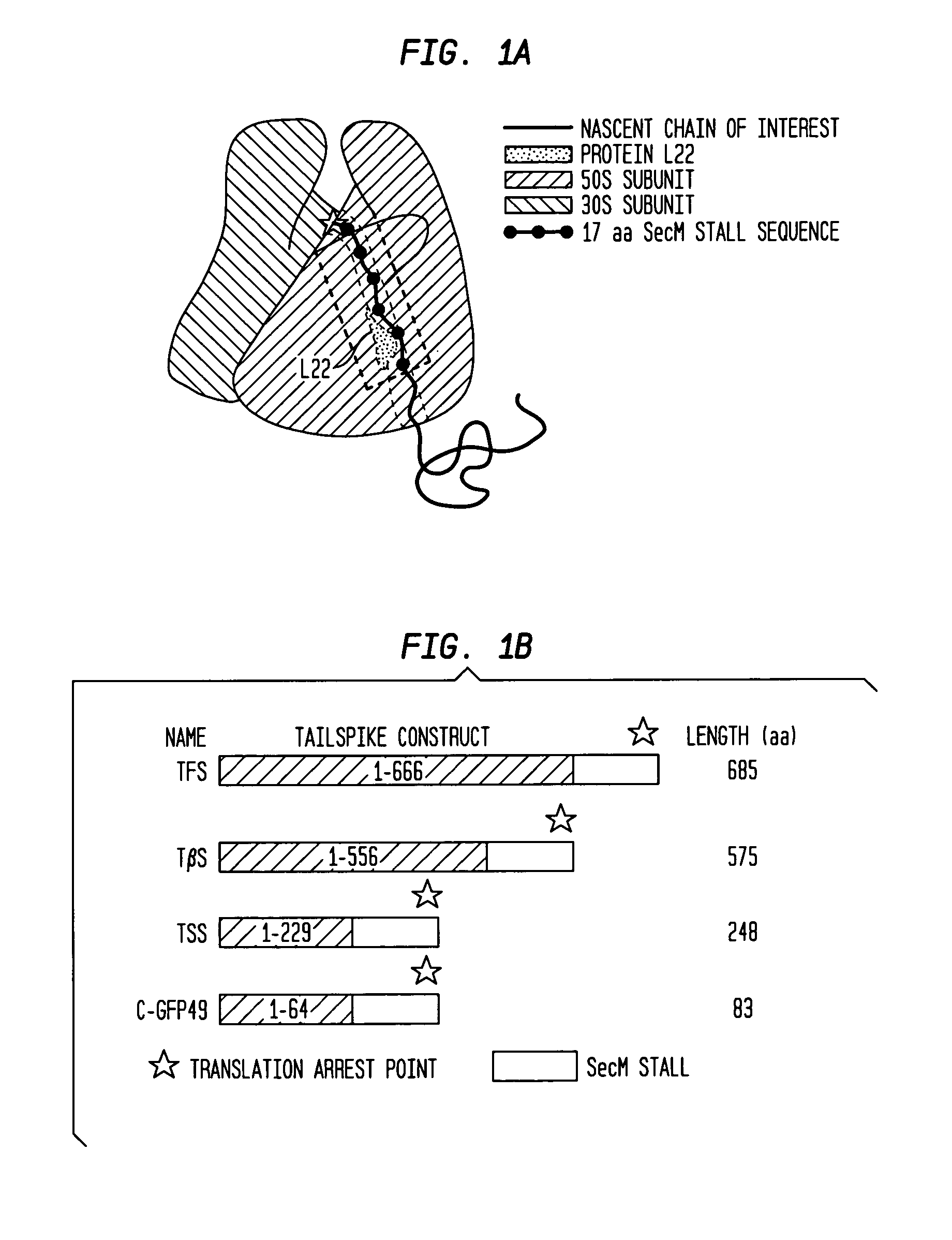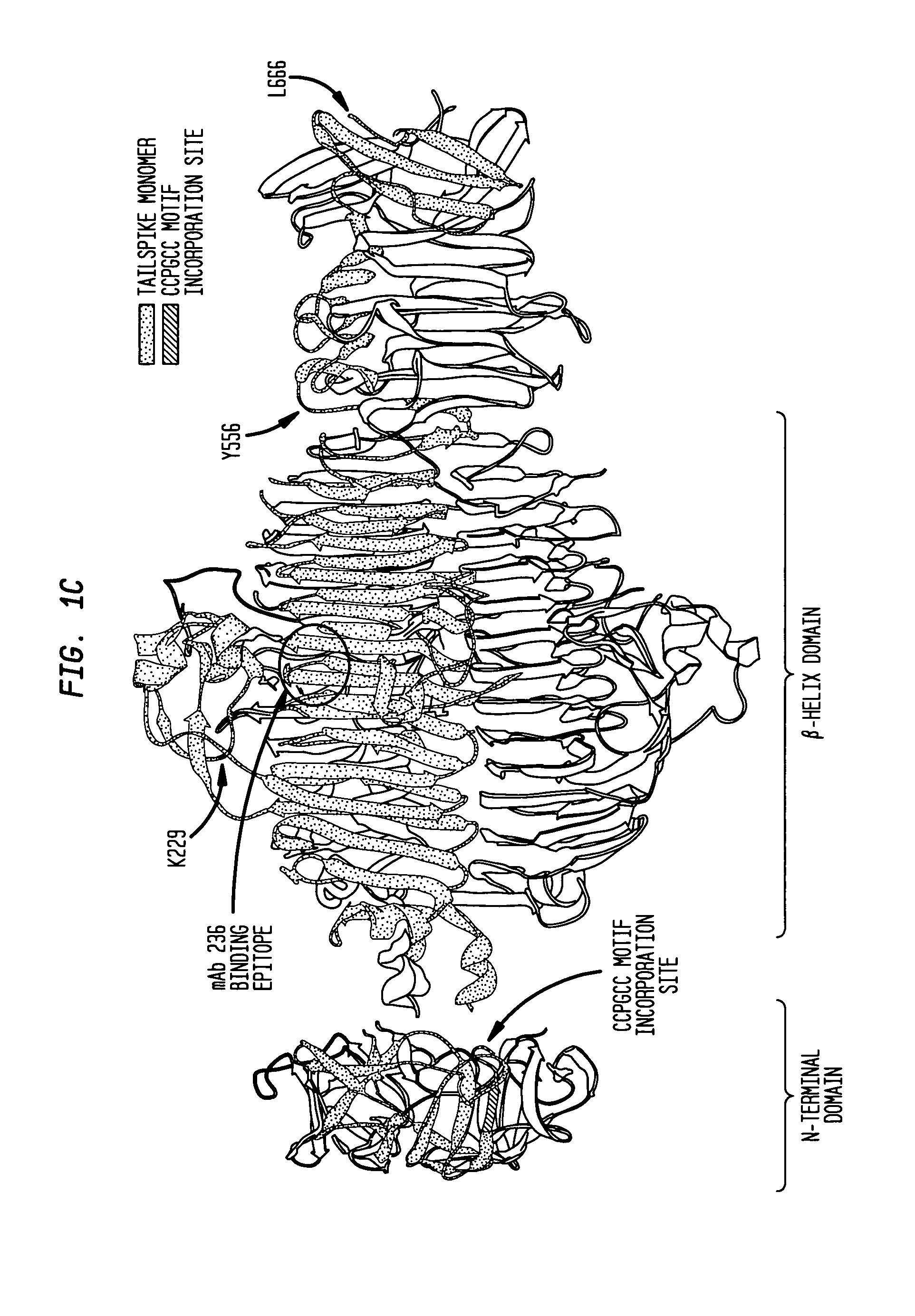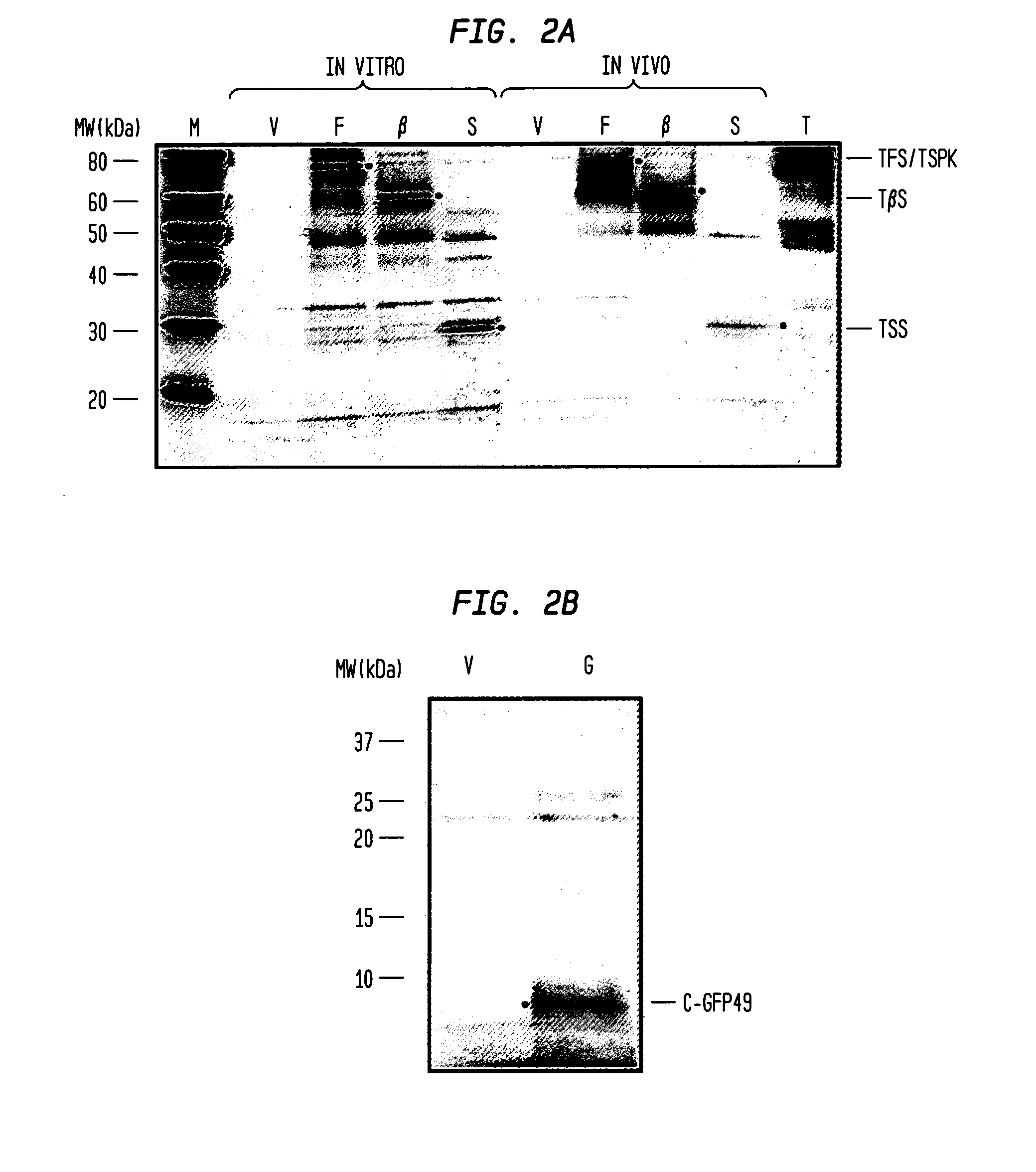Molecular constructs and uses thereof in ribosomal translational events
- Summary
- Abstract
- Description
- Claims
- Application Information
AI Technical Summary
Benefits of technology
Problems solved by technology
Method used
Image
Examples
example 1
Material and Methods
[0084]The present example sets forth particular starting materials, reagents, and other materials, as well as the methods used in the description of the present invention.
Plasmids
[0085]The SecM gene was obtained from plasmid pNH2114. Preparation of plasmids encoding SecM stall fusion constructs is described in detail below.
Isolation of Ribosomes
[0086]E. coli strain BL21(DE3)pLysS, transformed with one of the SecM stall construct plasmids, was grown overnight at 37° C. in 25 ml of LB broth supplemented with 100 μg / ml ampicillin (Amp). A 100 mL volume of LB+Amp was inoculated with 2 ml of the overnight culture and grown for 3.5 hours at 30° C. Cultures were induced with 500 μM isopropyl-β-D-thiogalactopyranoside (Fisher®) and grown as before for an additional 30 minutes. Two 8 ml R buffer (50 mM Tris, pH 7.5, 10 mM MgCl2, 150 mM KCl) ice cubes were added to each culture flask and the flasks were placed on ice to quickly cool the cultures to <4° C. Cell cultures fro...
example 2
In-Gel Detection of Fluorescently Labeled Nascent Chains
[0101]The Lumio Green Detection® Kit (Invitrogen®) was used to visualize the C-GFP49 nascent chain in a denaturing polyacrylamide gel. Sample preparation and visualization were performed according to the manufacturer's protocol. Briefly, resuspended ribosomes were mixed with Lumio gel sample buffer and labeled by mixing with 20 μM FlAsH. This was followed by incubation at 70° C. for 10 min. The samples were cooled to room temperature, mixed with the in-gel detection enhancer, incubated 5 min at room temperature, and the constituent proteins separated by denaturing polyacrylamide gel electrophoresis31 using a 14% acrylamide gel (Bio-Rad®). Bands were visualized using a UV transilluminator equipped with a digital camera (Kodak®). The gel image was digitized using an ethidium bromide filter with a 10 second exposure.
Fluorescence Measurements
[0102]Sucrose gradient fractions were diluted 1:5 in R buffer and fluorescence excitation a...
example 3
SecM-Directed Production of Stalled Ribosome Complexes
[0105]To exploit the SecM 17 aa stall sequence as a general tool to create stalled ribosome complexes bearing nascent chains of any sequence in vivo, three modified expression plasmids were created to insert the SecM stall sequence at three different places in the sequence of phage P22 tailspike (FIG. 1B; also see Example 1).
[0106]Tailspike is a homotrimeric parallel β-helix protein previously shown to form some native-like structure while nascent chains are still attached to the ribosome8,15. The longest tailspike nascent chain construct (TFS) was designed so that the almost all of the monomer would be exposed from the ribosome, with only the C-terminal ˜20 aa occluded in the ribosomal exit tunnel. The mid-length (TβS) and shortest (TSS) nascent chain constructs were designed to expose the entire β-helix domain or the first three rungs of the β-helix domain, respectively, outside of the ribosome tunnel.
[0107]E. coli cells were t...
PUM
| Property | Measurement | Unit |
|---|---|---|
| Length | aaaaa | aaaaa |
| Therapeutic | aaaaa | aaaaa |
| Degradation properties | aaaaa | aaaaa |
Abstract
Description
Claims
Application Information
 Login to View More
Login to View More - R&D
- Intellectual Property
- Life Sciences
- Materials
- Tech Scout
- Unparalleled Data Quality
- Higher Quality Content
- 60% Fewer Hallucinations
Browse by: Latest US Patents, China's latest patents, Technical Efficacy Thesaurus, Application Domain, Technology Topic, Popular Technical Reports.
© 2025 PatSnap. All rights reserved.Legal|Privacy policy|Modern Slavery Act Transparency Statement|Sitemap|About US| Contact US: help@patsnap.com



